2025: The year of the global cloud outage
Last checked from Azure SQL Database official status page 4 min. 13 sec. ago
Cloud computing platform for AI, data analytics, and application development.
Not working for you?
Report an outageStatusGator last checked the status of Azure on and the service was operational. There have been 2 user-submitted reports of outages in the past 24 hours.
This chart represents Azure SQL Database service health over the last 24 hours, with data points collected every 15 minutes based on issue reports, page visits, and signal strength. Sign up for free to see more Azure SQL Database status data.
View and upvote the most commonly reported Azure SQL Database issues to help us better indicate the service status.
Have a different problem with Azure SQL Database?
Report an outageExplore our interactive Azure SQL Database outage map to monitor real-time incidents and service issues across the globe. This dynamic map highlights regions around the world affected by recent Azure outages, giving you a clear view of performance and downtime trends.
Top reported Azure outage locations, last 24 hours:
StatusGator detects outages before they are officially acknowledged by providers. Here are some recent Azure disruptions that StatusGator customers knew about before the rest of the world:
This rating evaluates how quickly Azure acknowledges incidents, the consistency of updates, and whether reported issues align with actual service disruptions experienced by users. Learn more.
Avg. delay 15 - 30 min
This rating evaluates how quickly Azure acknowledges incidents, the consistency of updates, and whether reported issues align with actual service disruptions experienced by users. Learn more.
Avg. delay < 15 min
Avg. delay 15 - 30 min
Avg. delay 30 - 120 min
Avg. delay 2 - 4 hrs
Avg. delay >= 4 hrs
| Incident description | Duration | StatusGator detected | Officially acknowledged |
|---|---|---|---|
| Portal inaccessible and cloud services unavailable | 1m |
46m later
|
|
| Azure Portal services not loading or accessible | 3h 2m |
44m later
|
|
| Portal not loading or responding | 5h |
1h 42m later
|
|
| Connection issues and repeated certificate prompts. | 45m |
Never acknowledged
|
|
| Connection issues and repeated login prompts. | 55m |
Never acknowledged
|
|
| Analyze operation failing with error 503 | 1m |
Never acknowledged
|
|
| Azure Document Intelligence service unavailable | 1h 14m |
Never acknowledged
|
|
| Azure Front Door requests not being served. | 7m |
Never acknowledged
|
|
| OpenAI API deployment not found error. | 1h 17m |
Never acknowledged
|
|
| Azure AI services down | 8h 50m |
Never acknowledged
|
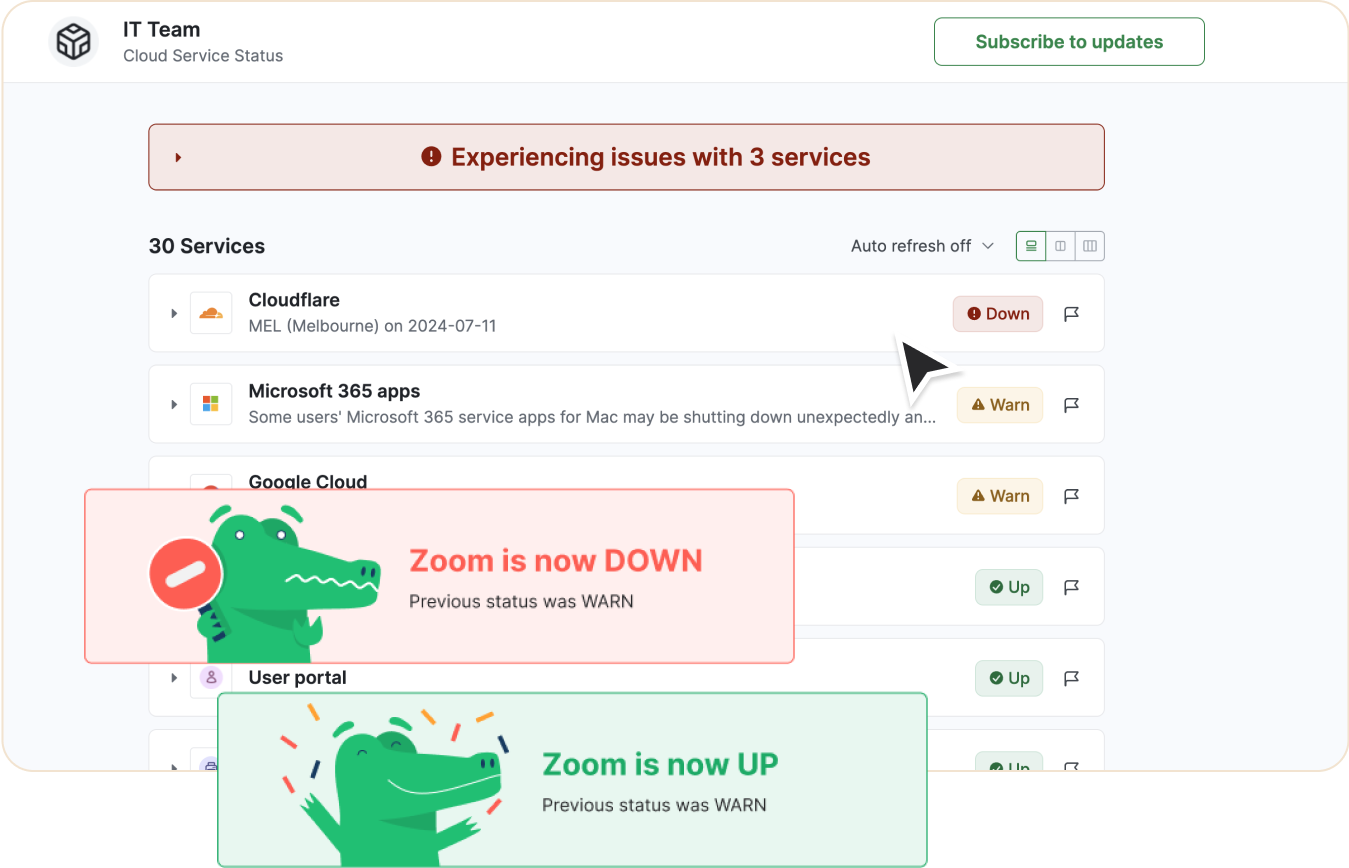
Follow the recent outages and downtime for Azure SQL Database in the table below. If you're experiencing a problem now, check the current Azure SQL Database status or report it.
| Incident Name | Duration | Started | Severity |
|---|---|---|---|
|
Minor incident
|
1m |
Warn
|
|
|
Minor incident
|
16d 2h 56m |
Warn
|
|
|
Minor incident
|
1m |
Warn
|
|
|
Minor incident
|
6h |
Warn
|
|
|
Minor incident
|
71d 8h 46m |
Warn
|
Stay updated with instant alerts for Azure SQL Database outages by signing up now!
You can also monitor any service or website on your status page
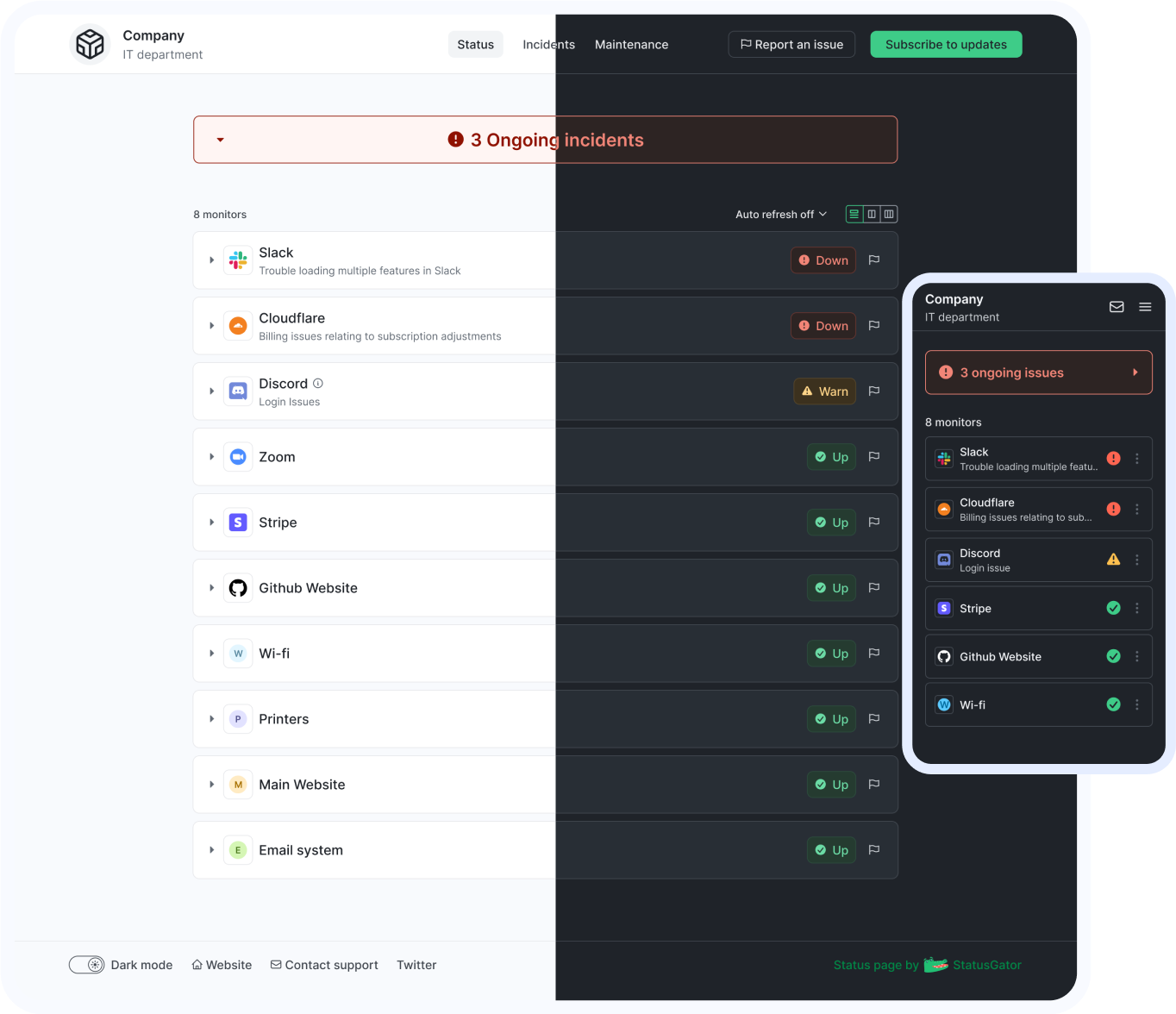
Stay updated with instant alerts for Azure SQL Database outages by signing up now!
With features designed to cover all your needs for monitoring and communicating outages or downtime, StatusGator keeps your team connected and informed. Stay updated on Azure SQL Database outages, potential problems, and its current status in real-time, ensuring you're always prepared to act.
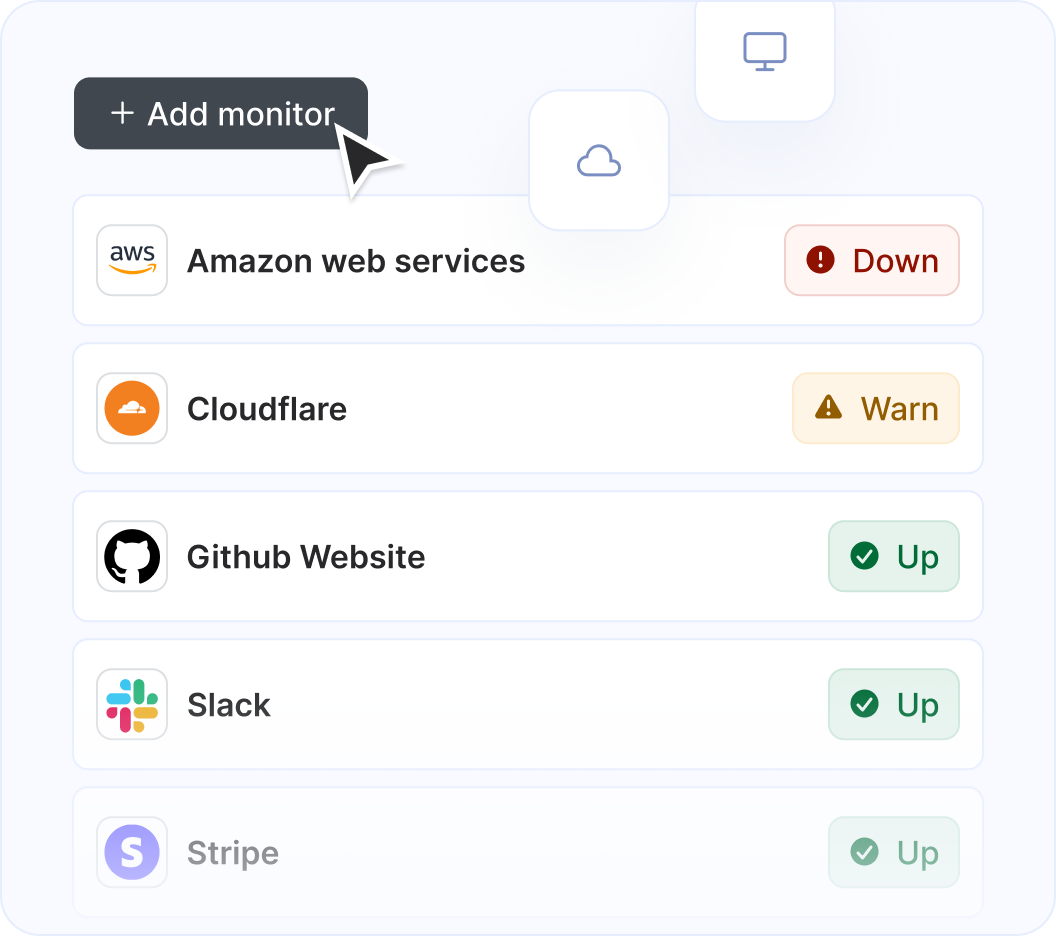

StatusGator monitors over 7,030 cloud services, hosted applications, and websites. Just add what you need to the list, and we'll automatically aggregate their statuses into a single page. You'll receive notifications for any issues affecting you and your page subscribers.
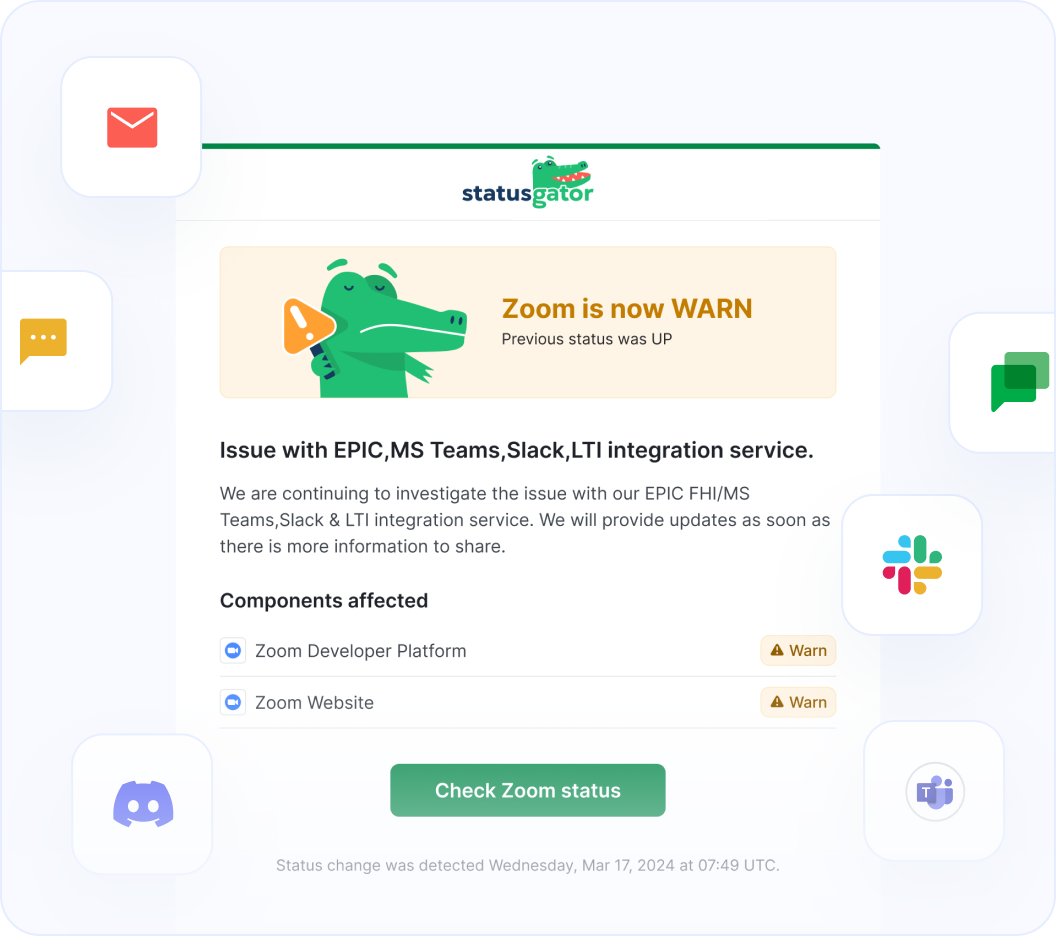
StatusGator monitors all of your services and websites and sends your team instant notifications when they go down. Stay abreast of issues that affect your team with notifications: in email, Slack, Teams, or wherever your team communicates.

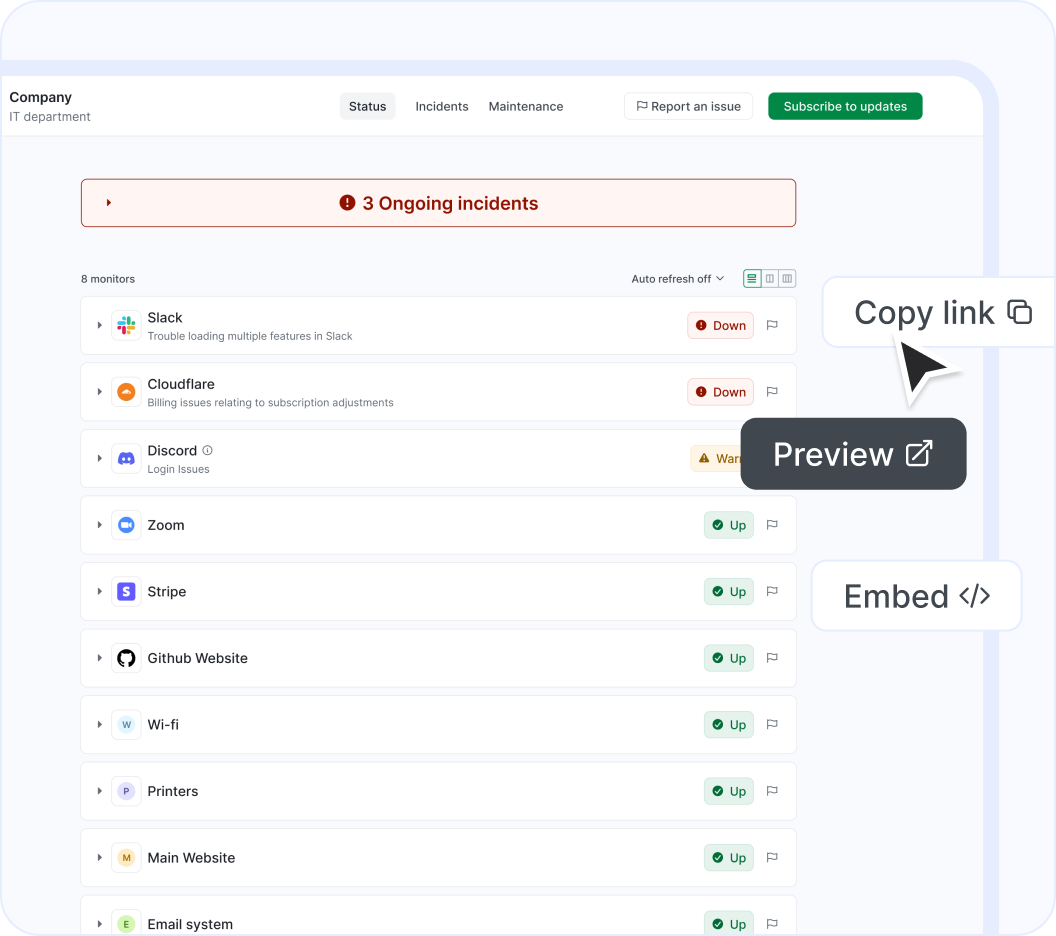

Easily notify your end-users of outages using a customizable status page. Display cloud services or websites, as well as any custom monitors you add manually. Create multiple status pages tailored to different needs, customize them, and embed them for maximum effectiveness.
Azure SQL Database (Cloud computing platform for AI, data analytics, and application development) is a a Cloud Infrastructure and Microsoft solution that StatusGator has been monitoring since March 2015. Over the past almost 11 years, we have collected data on on more than 1,951 outages that affected Azure SQL Database users. When Azure SQL Database publishes downtime on their status page, they do so across 7,137 components and 71 groups using 3 different statuses: up, warn, and down which we use to provide granular uptime metrics and notifications.
If you're wondering, "Is Azure SQL Database down?", or need to know its current status, we've got you covered. Our platform tracks every reported outage, performance issue, and maintenance window to ensure you're informed. Whether Azure SQL Database is experiencing a problem now or has recently resolved one, our detailed history keeps you updated.
More than 3,300 StatusGator users monitor Azure SQL Database to get notified when it's down or has an outage. This makes it one of the most popular Cloud Infrastructure services monitored on our platform. We've sent more than 196,700 notifications to our users about Azure SQL Database incidents, providing transparency and peace of mind. You can get alerts by signing up for a free StatusGator account.
If we detect a potential Azure SQL Database outage or other issue before it was reported on the official status page we will send an Early Warning Signal notification to StatusGator subscribers. We can often detect issues before they are officially acknowledged by the provider, giving you a head start on resolving any potential problems.
If Azure SQL Database is having system outages or experiencing other critical issues, red down notifications appear on the status page. In most cases, it means that core functions are not working properly, or there is some other serious customer-impacting event underway.
Warn notifications are used when Azure SQL Database is undergoing a non-critical issue like minor service issues, performance degradation, non-core bugs, capacity issues, or problems affecting a small number of users.
Azure SQL Database does not post separate notifications for planned maintenance work so we are unable to send notifications when maintenance windows begin. If you need Azure SQL Database maintenance notifications, please email us.
When Azure SQL Database posts issues on their status page, we collect the main headline message and include that brief information or overview in notifications to StatusGator subscribers.
When Azure SQL Database has outages or other service-impacting events on their status page, we pull down the detailed informational updates and include them in notifications. These messages often include the current details about how the problem is being mitigated, or when the next update will occur.
Because Azure SQL Database has several components, each with their individual statuses, StatusGator can differentiate the status of each component in our notifications to you whenever a particular component is down. This means, you can filter your status page notifications based on the services, regions, or components you utilize. This is an essential feature for complex services with many components or services spread out across many regions.
Stay updated with instant alerts for Azure SQL Database outages by signing up now!
Can't find your question? Email us to arrange a time to discuss. We'd love to chat!